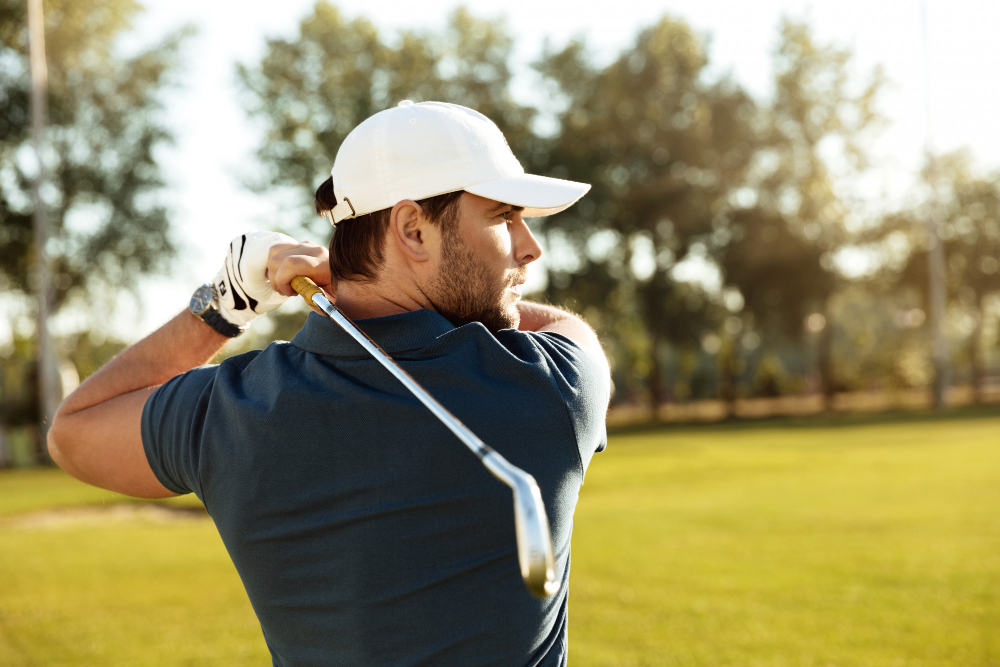Golfer’s Elbow: A Guide to Rehabilitating an Injured Arm

Golfer’s elbow is a commonly occurring injury for golfers and athletes who use their hands and wrists for repetitive activities. It’s usually characterized by pain and tenderness in the inside part of the elbow, making it difficult to grip, hold, or lift objects. If you’re an athlete or suffer from any arm-related injuries, it’s crucial to understand the causes, symptoms, and treatment options of this condition. In this blog post, we’ll guide you through the process of fixing golfer’s elbow and provide some tips on how to prevent it from happening in the first place.
1. Understanding Golfer's Elbow
Golfer’s elbow is a form of tendinitis that affects the inside of your elbow; it occurs when small tears form in the tendons of the forearm muscles that attach to the bone on the inside of the elbow. This injury is often triggered by repetitive motions or grip force with the wrist and fingers, which is common in activities such as golfing, racquet sports, lifting weights, computer use, and manual labor. The symptoms may start as a mild ache and gradually worsen over time, affecting your range of motion and mobility.
2. Treating Golfer's Elbow
If you suspect your elbow pain is caused by golfer's elbow, it's essential to seek medical attention to avoid further injuries. The treatment of golfer's elbow usually involves rest, ice, compression, elevation (RICE), modifying activities that cause pain or discomfort, physical therapy, and chiropractic treatment. Chiropractic care can incite the healing process by reducing inflammation, enhancing blood flow, and stimulating tissue repair. Your chiropractor may use techniques such as ultrasound, electrical stimulation, or massage therapy to improve healing.
3. Rehabilitating Golfer's Elbow
In addition to receiving chiropractic treatment, performing specific exercises to strengthen the forearm muscles and improve flexibility can help to rehabilitate your elbow. Some exercises to consider include wrist curls, reverse wrist curls, and grip strengthening exercises. Your chiropractor or physical therapist can guide you through these exercises and help you progress gradually to avoid re-injury or aggravation.
4. Prevention Strategies
Preventing golfer’s elbow involves adopting protective measures to reduce the risk of injury. Some of the preventative strategies you can embrace include warming up before engaging in any physical activity, using the proper technique, avoiding overuse, using protective gear like wrist braces or elbow pads, maintaining overall physical fitness, and taking breaks frequently during repetitive activities.
5. Final Thoughts
Golfer’s elbow can be a debilitating injury that limits your mobility and affects your performance as an athlete. However, with the right care and rehabilitation plan, you can recover from this condition and prevent it from recurring. Whether you’re a professional athlete or someone who engages in repetitive activities, it’s crucial to understand the causes, symptoms, and treatment options of golfer’s elbow. If you’re experiencing any elbow pain or discomfort, contact your chiropractor or healthcare provider immediately and schedule an appointment to ensure you receive the right treatment and care for your condition.
Conclusion
Golfer's elbow can be a challenging injury to deal with, but avoid despair as it is treatable and can be overcome with the right rehabilitation plan. By seeking appropriate medical care, engaging in physical therapy, and adopting preventative strategies, you can improve your elbow's mobility and flexibility and reduce the risk of re-injury. At Lions Chiropractic & Injury, we specialize in treating golfers elbow and other sports-related injuries. If you're looking for chiropractors in Winter Park, FL, contact us today to schedule an appointment and start your recovery journey.